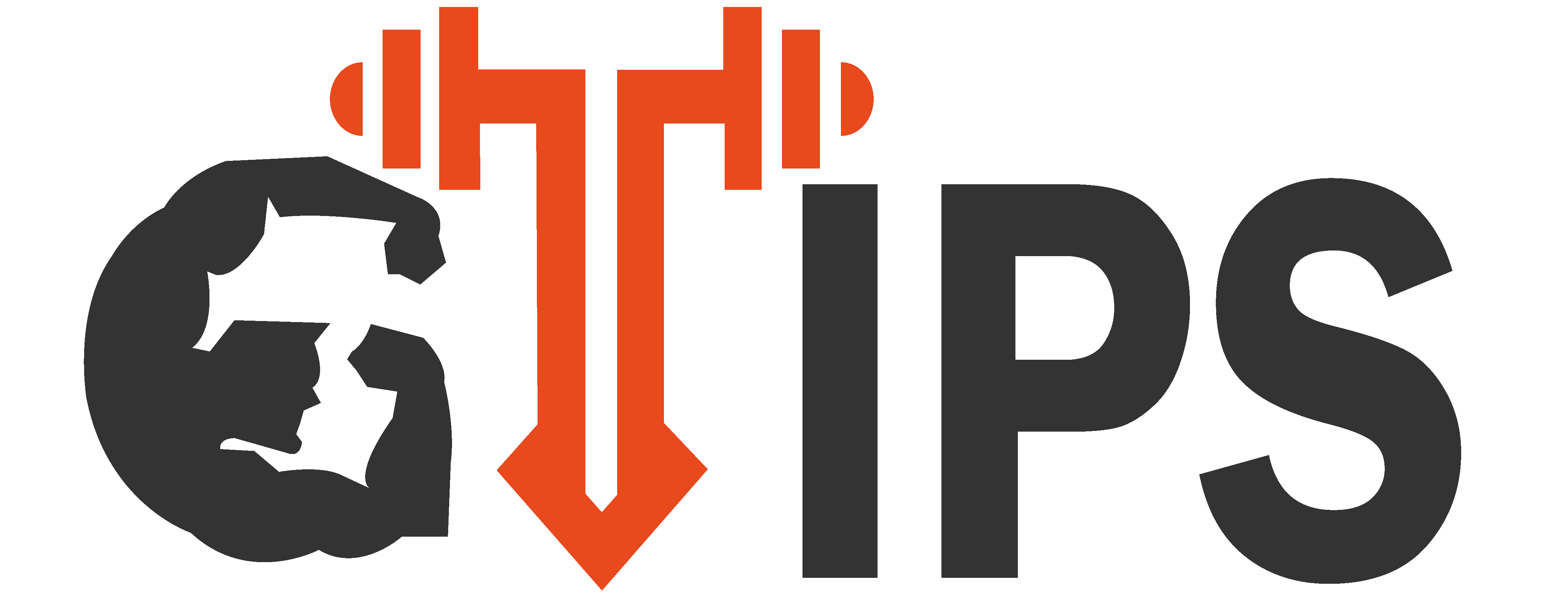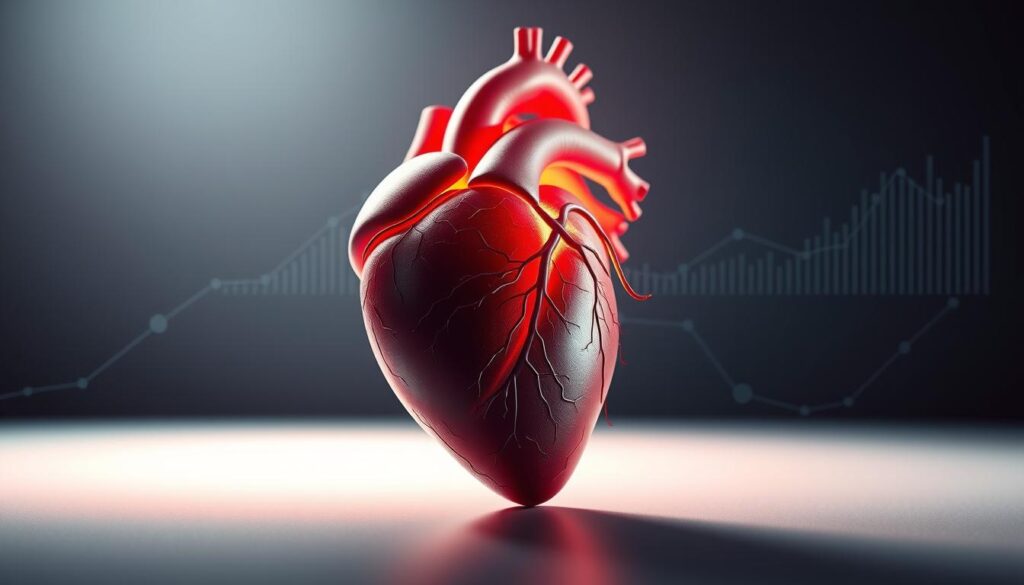Sarah found losing weight tough until she tried cardio exercises. She struggled with fitness for years but then found a workout that changed her life. It started with simple exercises that helped her see health and fitness in a new light.
Cardio is key for losing weight. It helps burn calories, boosts your metabolism, and improves health. Whether you’re new to fitness or experienced, knowing how to get the most out of cardio workouts is important.
The American Heart Association says you should do at least 150 minutes of moderate cardio a week. It’s not just for losing weight. It’s about becoming healthier and more energetic. Your body can change a lot if you stick to regular workouts.
Key Takeaways
- Cardio exercises are key for losing weight
- Regular workouts can change your body and metabolism
- There are many cardio options for all fitness levels
- Using the right technique boosts fat burning
- Cardio also improves health beyond just weight loss
Understanding the Science Behind Cardio and Fat Loss
Cardiovascular training is more than just moving your body. It changes how your metabolism works and helps you burn calories better. Your body turns into a fat-burning machine with the right calorie-burning exercises.
When you start cardiovascular training, your body goes through big changes. These changes help you lose weight and get fitter.
How Cardiovascular Exercise Transforms Metabolism
Your metabolism gets a big boost from cardiovascular training. This happens through:
- Increased oxygen consumption
- Enhanced mitochondrial efficiency
- Improved insulin sensitivity
- Higher resting metabolic rate
Calorie Burning Mechanisms in Action
Calorie-burning exercises work through many biological pathways. Your body uses different energy systems based on how hard and long you exercise.
| Exercise Type | Calorie Burn Rate | Primary Energy System |
|---|---|---|
| Low Intensity | 5-10 calories/minute | Aerobic |
| Moderate Intensity | 10-15 calories/minute | Mixed Aerobic |
| High Intensity | 15-20 calories/minute | Anaerobic |
Heart Rate Zones and Fat Burning
Knowing your heart rate zones helps you burn fat better. Different intensity levels target specific metabolic processes. This lets you get the most out of your cardiovascular training.
Studies show that exercising at 60-70% of your maximum heart rate is best for burning fat. It keeps your body burning fat for a long time.
Top High-Intensity Cardio Exercises for Weight Loss
High-intensity interval training (HIIT) has changed how we burn fat and stay fit. These exercises can make your workouts more effective and help you lose weight faster.
HIIT is great for getting the most out of your fitness. It involves short, intense workouts followed by brief breaks. This method is better than steady cardio because it works your body harder and raises your metabolism.
- Burpees: A full-body exercise that combines strength and cardio
- Mountain Climbers: Engage multiple muscle groups while burning calories
- Sprint Intervals: Rapidly increase heart rate and metabolic burn
- Jump Squats: Build lower body strength while torching fat
Your HIIT workout should last 20-30 minutes. Intensity matters more than duration. Do each exercise at full effort for 30-45 seconds, then rest for 15-30 seconds.
“The magic is in the intensity, not the duration of your workout.” – Fitness Expert
These techniques keep burning calories even after you stop working out. They give you a metabolic boost that helps you lose fat continuously.
Essential Running Workouts for Maximum Fat Burn
Running is a top choice for losing weight. It works for both newbies and seasoned runners. By trying different running styles, you can burn more calories and get fitter.
Running outdoors is great for keeping weight off. It turns your body into a fat-burning machine. This happens when you mix up your running to keep your heart rate up.
Interval Running Techniques
Interval running is a big win for losing fat. It switches between fast sprints and slower jogging. This mix really gets your metabolism going.
- 30-second sprint followed by 90-second light jogging
- Repeat intervals 6-8 times per session
- Gradually increase sprint duration as fitness improves
Sprint Training Methods
Sprint training is tough but effective. It uses short, fast runs to burn fat. These quick bursts work many muscles and burn calories fast.
- Warm up with 5-10 minutes of light jogging
- Perform 10-15 second maximum-effort sprints
- Rest 60-90 seconds between each sprint
- Complete 5-7 sprint repetitions
Distance Running for Fat Loss
Long runs build endurance and burn fat. Run at a pace that’s not too hard but keeps you burning calories. This way, you avoid getting too tired.
Pro tip: Start with 20-30 minute runs and progressively increase duration to challenge your cardiovascular system and enhance weight loss.
Low-Impact Cardio Options for Beginners
Starting your fitness journey can be tough, whether you have joint issues or are new to exercise. Low-impact cardio is a great way to lose weight and get fit without hurting your body too much.
For beginners, there are many low-impact cardio exercises that are easy on the joints but effective. These exercises are perfect for those just starting out on their fitness path.
- Swimming: A full-body workout that burns calories
- Cycling: Low-stress option for cardiovascular health
- Elliptical training: Minimal joint impact with maximum results
- Walking: Simple yet effective low-impact cardio
Now, let’s look at some detailed low-impact cardio options for weight loss:
| Exercise | Calories Burned (30 mins) | Joint Impact |
|---|---|---|
| Swimming | 250-400 | Minimal |
| Stationary Cycling | 200-300 | Very Low |
| Elliptical | 300-400 | Low |
When you start low-impact cardio, listen to your body and slowly increase the intensity. Start with 15-20 minute workouts and gradually make them longer as you get fitter. Staying consistent is important for any weight loss journey.
Pro Tip: Mix up different low-impact cardio exercises to keep your workouts fun and challenging.
Indoor Cardio Exercises for Home Workouts
Turning your home into a gym is simpler than you think. You don’t need a gym or expensive gear for effective cardio. With the right exercises, you can burn calories and get fit from home.
Starting home workouts is easy and convenient. All you need is your body weight and a small area for a great workout.
Equipment-Free Cardio Exercises
Find powerful cardio moves that need no equipment:
- Jumping jacks: A classic full-body workout that raises heart rate quickly
- High knees: Engage your core and boost cardiovascular endurance
- Mountain climbers: Work multiple muscle groups simultaneously
- Burpees: An intense exercise combining strength and cardio
Small Space Workout Solutions
Even with little space, you can stay fit. Indoor cardio routines fit well in small areas. They’re great for apartments, small rooms, or home offices.
Time-Efficient Cardio Routines
For those with tight schedules, high-intensity interval training (HIIT) is perfect. A 15-20 minute HIIT session can greatly improve your heart health and burn calories.
Start with what you can do and slowly get harder. Listen to your body and keep up with your workouts for the best results.
Swimming and Water-Based Cardio Exercises
Swimming is a great way to lose weight through cardio. It’s a low-impact workout that’s easy on your joints. At the same time, it burns a lot of calories.
Water workouts are great for losing weight. They make your body work harder against the water. This means you get a full-body workout that’s tough on your heart and muscles.
- Burn up to 500 calories per hour with vigorous swimming
- Reduce joint impact compared to traditional land-based exercises
- Improve overall cardiovascular endurance
- Strengthen muscles without additional equipment
Swimming strokes vary in intensity. Freestyle burns the most calories. Breaststroke is gentler, perfect for beginners.
Try adding water aerobics, aqua jogging, and swimming intervals to your routine. Start with 20-minute sessions. Then, increase the time as you get fitter.
Swimming turns exercise into a fun, full-body workout that helps you lose weight for good.
Cardio Exercises for Weight Loss: Complete Program Guide
Creating a good cardiovascular training program needs careful planning. Your workouts should be structured to get the best results without getting tired or hurt.
To make a full cardio program, know your fitness level and set achievable goals. The right plan can change your body and improve your metabolism.
Weekly Workout Schedule
A good weekly plan should have:
- 3-4 high-intensity interval sessions
- 2 moderate-intensity steady-state workouts
- 1 active recovery day
Progressive Intensity Guidelines
To avoid hitting a plateau, slowly increase the intensity:
- Start with a baseline fitness test
- Boost workout time by 10% each week
- Slowly make the exercises harder
- Watch your heart rate and how hard you feel it is
Recovery and Rest Recommendations
Good recovery is key for lasting cardiovascular training. Follow these tips:
| Fitness Level | Rest Days | Active Recovery |
|---|---|---|
| Beginner | 2-3 days | Light walking |
| Intermediate | 1-2 days | Yoga, swimming |
| Advanced | 1 day | Low-intensity cross-training |
Remember, listening to your body and allowing enough rest is vital for lasting fitness success.
Combining Strength Training with Cardio for Enhanced Results
To really change your fitness journey, you need a smart plan for heart health. Mixing strength training with cardio exercises can change your weight loss game and boost your metabolism. Your body will start burning fat better when you do both.
When you build muscle and burn calories, magic happens. Strength training adds lean muscle, which raises your metabolic rate. This means you’ll keep burning calories long after your workout. A dumbbell-based circuit training is a great way to blend these two.
- Build muscle mass to increase metabolic rate
- Burn more calories during and after workouts
- Improve overall body composition
- Enhance cardiovascular endurance
Try to do strength training 3-5 times a week. Focus on full-body workouts that work many muscles at once. Compound movements like squats, lunges, and push-ups are great for getting the most out of your workouts.
Your best workout might switch between strength moves and quick cardio bursts. This keeps your heart rate up while building muscle strength. Sticking to it is the secret to reaching your fitness goals.
Indoor Cycling and Stationary Bike Workouts
Indoor cycling is a great way to do cardio at home. It uses a stationary bike for a low-impact workout. This burns calories and boosts heart health. Home workout routines often include cycling to help lose fat.
You can adjust your indoor cycling to fit your fitness level. There are different techniques to try:
- Steady-state rides for endurance building
- High-intensity interval training (HIIT) cycles
- Resistance-based hill climb simulations
When picking a stationary bike, look for these features to help with weight loss:
| Bike Feature | Weight Loss Impact |
|---|---|
| Adjustable Resistance | Increases calorie burn |
| Heart Rate Monitoring | Tracks workout intensity |
| Preset Programs | Provides structured workouts |
Pro tip: Try to do 30-45 minute sessions. Mix up the intensity to keep things interesting. Also, remember to eat well to get the best weight loss results.
Being consistent is important for losing weight. Start with short sessions and slowly increase the time and intensity. This will help you get better and avoid getting bored.
Conclusion
Your journey to lose weight through cardio is more than just burning calories. It’s about building a lasting fitness habit that changes your body and health. Effective cardio exercises help you lose weight while improving your heart health and fitness.
As you’ve learned, there are many workouts like high-intensity interval training, running, swimming, and indoor cycling. These can help you reach your weight loss goals. The secret is finding cardio exercises that keep you excited. Start slow, listen to your body, and keep pushing yourself to avoid getting stuck.
But remember, losing weight is not just about exercise. Eating right, resting well, and being consistent are also key. By adding effective cardio to a balanced lifestyle, you’ll see lasting results. Stay patient, track your progress, and celebrate every small win on your fitness path.
The most important thing is to start. Pick cardio exercises you enjoy, make a realistic plan, and stick to it. Your body can change a lot when you give it the right support and motivation.






